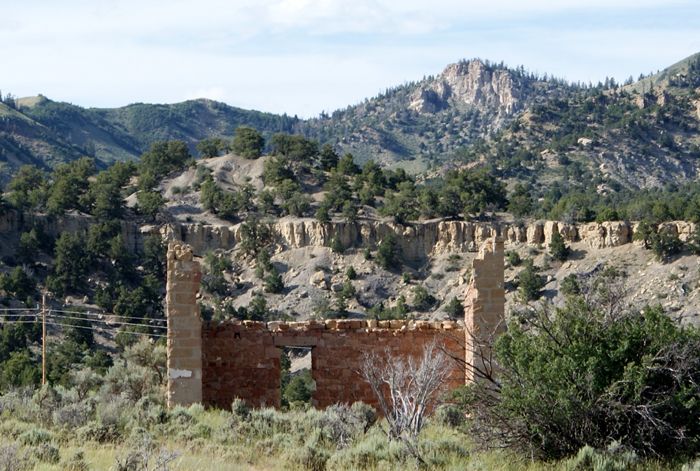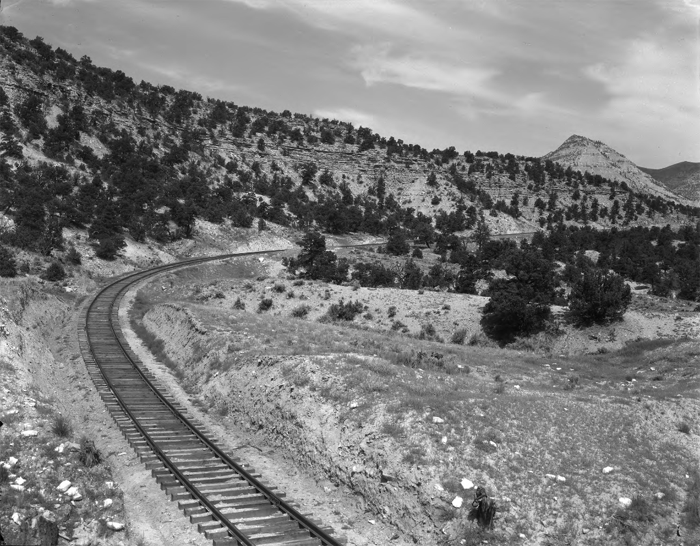
Okay, here is a 1200-word journalistic article about "Coal City, Utah," conceived as a representative town embodying the history, struggles, and enduring spirit of Utah’s real coal mining communities.
Echoes in the Canyons: The Enduring Spirit of Coal City, Utah
The wind whispers a lonesome tune through the gnarled juniper and sagebrush that cling to the steep canyon walls of eastern Utah. Below, nestled precariously in a narrow valley carved by an ancient river, lies what was once a roaring testament to human industry and grit: Coal City. While no single town bears the precise name "Coal City" in Utah’s official gazetteers, the spirit of such a place is etched deep into the state’s rugged eastern plateaus – a composite of communities like Helper, Price, Scofield, and Sunnyside, each a chapter in the epic saga of "black gold."

Coal City, as we imagine it, embodies the rise, boom, struggle, and eventual quietude of these vital, yet often overlooked, corners of the American West. It is a place where the mountains hold not just natural beauty, but the echoes of pickaxes, the rumble of coal cars, and the hopes and heartbreaks of generations who carved a life out of rock and dust.
The Black Diamond Rush: A Crucible of Cultures
The story of Coal City truly began in the late 19th century, when the railroads, hungry for fuel, pushed into Utah’s vast, untapped coalfields. Beneath the stark, sun-baked landscape lay immense reserves of high-quality bituminous coal, a treasure waiting to be unearthed. The discovery sparked a veritable "black diamond rush," transforming desolate canyons into bustling, albeit rough-hewn, settlements almost overnight.
"My grandfather used to say this place was built on the sweat of every nation under the sun," recounts Elena Rodriguez, 68, a third-generation resident and former schoolteacher, her voice raspy with the dry mountain air. "They came from Italy, Greece, Yugoslavia, Japan, Mexico – all drawn by the promise of work, no matter how dangerous." Indeed, Utah’s coal camps became extraordinary melting pots, far more diverse than many of the state’s more insular communities. This blend of cultures, languages, and traditions forged a unique identity, where shared hardship often transcended ethnic divides.
Miners lived in company towns, their lives dictated by the rhythm of the mine whistle. Houses were simple, often identical, but within their walls, vibrant communities flourished. Schools, churches, and social halls sprang up, sustained by the wages – meager as they sometimes were – of the men who ventured daily into the earth’s dark embrace. "There was a fierce loyalty here," says Silas "Sledge" Peterson, 92, a retired miner whose gnarled hands bear the marks of decades underground. "We knew each other’s families, mourned each other’s losses. It wasn’t just a job; it was a brotherhood, forged in the dark."
The coal fueled Utah’s burgeoning industries, powered homes across the West, and became an indispensable commodity for a rapidly industrializing nation. Coal City boomed, its population swelling, its main street lined with saloons, general stores, and boarding houses. It was a place of opportunity, but also of immense peril.
The Price of Progress: Dust, Danger, and Discontent
The dark maw of the mine was a constant reminder of life’s fragility. Utah’s coal mining history is punctuated by devastating disasters, grim milestones that cast long shadows over communities like Coal City. The Winter Quarters Mine disaster of 1900, which killed over 200 men, and the Castle Gate explosion of 1924, claiming 171 lives, are stark reminders of the ever-present danger. In Coal City, every family had a story of a father, brother, or friend lost to a cave-in, an explosion, or the insidious "black lung" – pneumoconiosis, a disease caused by inhaling coal dust.

"My own great-uncle died in a gas explosion back in ’37," Elena Rodriguez recalls, her eyes clouding. "They brought him out on a stretcher, covered in soot. It was a part of life, a terrible part. But you kept going, because what else was there?"
The brutal conditions and meager pay also fueled labor unrest. Coal City, like its real-life counterparts, experienced bitter strikes and clashes between miners and powerful coal companies. The fight for better wages, safer conditions, and the right to unionize was a defining struggle of the early 20th century. These conflicts, often violent, further cemented the community’s identity, forging a collective resilience born of shared struggle against formidable odds.
Beyond the human cost, the environmental impact of intensive mining began to scar the landscape. Waste piles, or "gob piles," grew into small mountains, leaching pollutants into the pristine streams. The air, once clear, often hung heavy with coal dust. The land itself, once a source of sustenance for Native American tribes and early pioneers, was irrevocably altered, a testament to humanity’s insatiable demand for energy.
The Long Decline: Whispers in the Wind
The mid-20th century brought the first tremors of decline. After World War II, America began to shift away from coal. Natural gas and oil became cheaper, cleaner, and more efficient alternatives. Automation in the mines, while improving safety in some respects, also reduced the need for manpower. Environmental regulations, though vital, added further costs to an already struggling industry.
One by one, the mines surrounding Coal City began to close. First the smaller, less productive ones, then the giants that had once employed hundreds. The impact was devastating. "It felt like the lifeblood was just draining out of the town," says Peterson, staring out at the distant, scarred hills. "Men who had worked their whole lives, whose fathers and grandfathers worked those seams, suddenly had nothing."
The silence that descended upon Coal City wasn’t peaceful; it was a heavy, suffocating blanket of economic despair. Businesses shuttered, families packed up their meager belongings, and the population dwindled. Children, once destined for the mines, now looked to Salt Lake City, Provo, or even farther afield for opportunities. The vibrant cultural tapestry began to fray as families dispersed, taking their traditions and stories with them. By the late 20th century, Coal City was a shadow of its former self, a "ghost town" in spirit if not entirely in population.
Echoes and Endeavors: A Town Reimagined?
Today, Coal City endures, a testament to the stubborn resilience of its remaining inhabitants. The main street, once a hive of activity, now hosts a handful of businesses: a convenience store, a small diner, and "The Black Diamond Heritage Center," a museum lovingly curated by local volunteers. Old mining equipment sits outside, rusted and silent, while inside, photographs and artifacts tell the story of a bygone era.
"We can’t forget what built this place," says Sarah Jensen, 35, a new arrival who runs a small artisanal shop selling local crafts. She’s part of a small but growing wave of younger people drawn to the area’s affordability and unique history, even if job prospects remain scarce. "There’s a raw beauty here, a sense of history that you don’t find in the suburbs. It’s challenging, but there’s potential."
The challenges are immense. Economic diversification remains the holy grail. Efforts to attract tourism, capitalizing on the region’s stunning natural beauty – the nearby national forests, dinosaur fossil sites, and recreational opportunities – have had mixed success. Some see a future in renewable energy, ironically, with solar farms perhaps replacing the coal-fired power plants that once defined the region. Environmental reclamation projects are slowly transforming the old gob piles, attempting to heal the land.
"We’re not just waiting for the next boom," asserts Mayor David Lee, a pragmatic figure who juggles the town’s meager budget. "We’re trying to build a different future, one that honors our past but isn’t shackled by it. It means embracing new technologies, attracting remote workers, and reminding people that there’s more to these canyons than just coal." He points to a small fiber optic cable project, bringing high-speed internet to some homes – a lifeline in the digital age.
The Unfolding Legacy
Coal City, Utah, is more than just a place on a map; it’s a living monument to the human spirit. It tells a story of ambition, hardship, sacrifice, and the relentless pursuit of a better life. It reminds us of the profound impact of industry on both landscape and community, and the ongoing struggle to balance economic prosperity with environmental stewardship.
The black dust may no longer coat every surface, and the roar of the mines has faded to a whisper. But the echoes remain – in the weathered faces of its oldest residents, in the crumbling foundations of company houses, and in the resilience etched into the very fabric of the canyon walls. Coal City stands as a powerful symbol of Utah’s industrial heart, a place forever shaped by the black diamonds it yielded, and by the indelible mark left by the generations who dared to call it home. Its future, like the shifting sands of the desert, remains uncertain, but its past is a testament to an enduring, unbreakable spirit.


